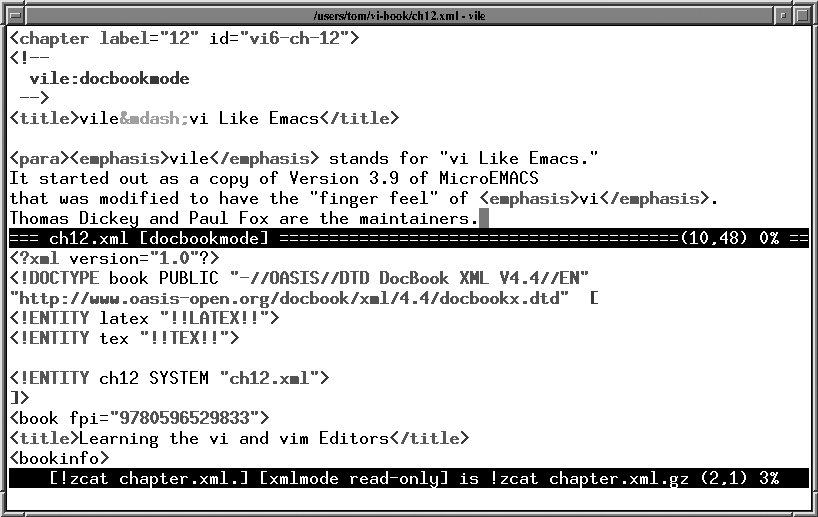Multiwindow Editing
vile is somewhat different from the other clones. It started life as a version of MicroEMACS, and then was modified into an editor with the “finger-feel” of vi.
One of the things that versions of Emacs have always done is handle multiple windows and multiple files; as such, vile was the first vi-like program to provide multiple windows and editing buffers.
As in elvis and Vim,
the :split command[60] creates a new window, and then you can use the ex command :efilename to
edit a new file in the new window. After that, things become
different; in particular, the vi
command mode keys to switch among windows are very different.

Figure 18-1 depicts a split screen that
results from typing vile
ch12.xml[61] followed by :split
and :e !zcat chapter.xml.gz.
Like Vim, all windows share the bottom line for execution of
ex commands. Each window has its
own status line, with the current window indicated by filling its
status line with equals signs. The status line also acquires an
I in the second column when in
insert mode, and [modified] is
appended after the filename when the file has been changed but not yet
written out.
vile is also like Emacs in
that commands are bound to key sequences. Table 18-1 presents the commands and their key
sequences. In some cases, two sets of key sequences do the same
operation, for example, the delete-other-windows ...